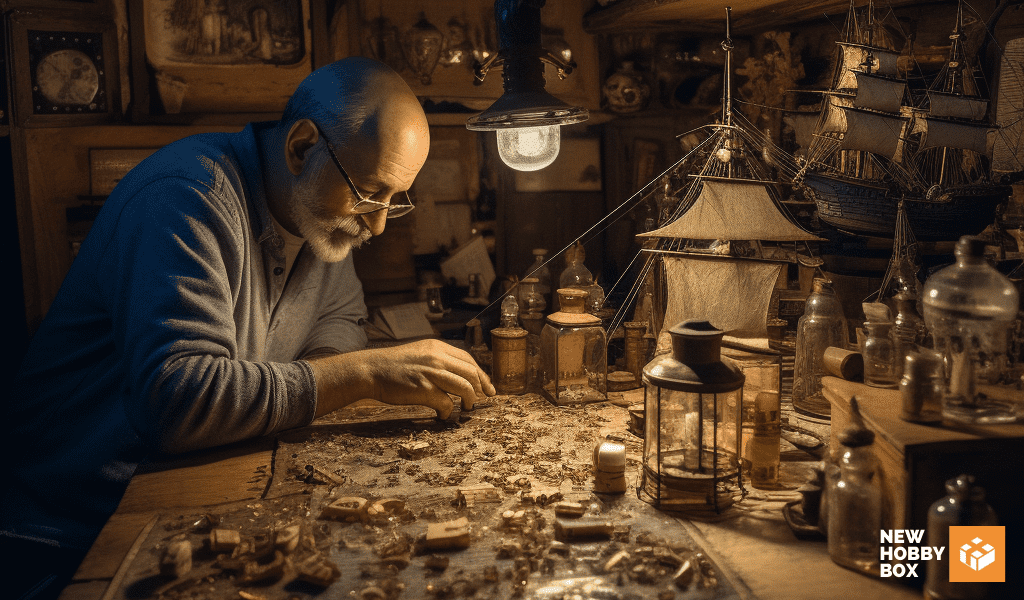
Imagine people with hobbies that go beyond the realms of the ordinary, where photography, scrapbooking, and woodworking are just the tip of the iceberg. Now picture people whose bizarre passion has driven them to the extremes, where their hobbies transform into astonishingly pricey, hazardous, and downright outlandish pursuits. If you’re having trouble imagining what are the rarest, oldest, most expensive, and most exotic hobbies, have a look at the following:
Three rare hobbies are corrosion casting, extreme ironing, and blood painting. The three oldest hobbies are coin collecting, hunting, and Backgammon. The most expensive hobbies are yachting, polo, and collecting cars. Three exotic hobbies are beetle fighting, Sapito, and stick fighting.
Hobbies have a way of enriching our lives, giving us the space and spark for creativity and the development of skills. They provide a respite from the daily grind sparking creativity, honing skills, and offering respite from the daily grind. And taking up a hobby isn’t something new either. The moment mankind had a second to do anything but constantly survive marked a turning point in creating activities that provided enjoyment. Throughout history, individuals with ample time and resources have always reveled in hobbies, partaking in games, sports, and artistic ventures across the globe.
With a rich history behind us, it’s time we dive into the fascinating world of unconventional hobbies, exploring the oddities of the bygone eras and the eccentricities of the modern age. So grab your time machine and join us as we explore a total of 12 hobbies, 3 of the rarest, oldest, most expensive, and most exotic hobbies that are sure to make you gasp.
What Are The Rarest Hobbies?
Whether baking in the kitchen, curling up with a book, or hitting a ball, hobbies are our passions – things we just love to do. But what happens when these regular activities start to dull? The knife starts to lose its edge so to speak. Well, that’s when you search for a new hobby, something more unusual, and, if you’re highly imaginative, something nobody else does. Enter rare hobbies.
Rarest hobbies like corrosion casting, extreme ironing, and blood painting have limited participants. Corrosion casting (resin blood vessel models) and blood painting deter some with their gore. Extreme ironing demands athleticism and thrill-seeking, as it’s done on mountains, water, or forests.

1. Corrosion Casting
Corrosion casting is a technique used to create detailed models of blood vessels by filling them with resin. This process captures the intricate network of vessels, enabling researchers to study the circulatory system and develop new medical treatments. In other words, it’s a hobby of using resin to capture the 3D structure of blood vessels or internal organs.
Macabre? For sure. But there’s always been a fascination with anatomy that has led people to hobbies like taxidermy, which is the art of preparing, stuffing, and mounting an animal for display or study. If you lived in the Victorian era, this would have been a rather interesting and ordinary pursuit. In fact, many middle-class homes in that period displayed whimsically dressed kittens or a dancing hedgehog. Now that’s macabre and as a cat-parent, unimaginable…

The practice of corrosion casting is primarily used for education in anatomy. But the extraordinary beauty of these objects has created a cottage industry and attracted hobbyists as well. It works like this:
- Prep the Specimen: Imagine using a sheep’s heart for corrosion casting, you would begin by draining the fluids from the organ.
- Add Resin: Simply begin injecting resin through the sheep’s vascular system, then left to harden.
- Remove Tissue: The remaining tissue is macerated or removed, leaving you with a cast of blood vessels.
The process creates intriguing sculptural objects that some hobbyists display under glass domes. Undertaking corrosion casting means learning a fascinating skill, expanding your knowledge of animals, and creating something beautiful. But it’s certainly a hobby that would fit into a more gothic interest.

2. Extreme Ironing
Extreme ironing is an adrenaline-fueled sport that combines the mundane task of ironing with extreme outdoor activities. Participants perform ironing in challenging environments, such as rock climbing, skydiving, or snowboarding, making it a unique and exciting hobby.
Participants find the most unusual and often dangerous places to set out a board and iron a shirt. Combining climbing, hiking, and this mundane chore may seem odd (because it is) but there are enough enthusiasts to warrant competitions – the first extreme ironing world championships were held in Germany in 2002.
While highly competitive athletes are involved, most extreme ironers enjoy the physical challenge and the sheer craziness of lugging an ironing board, iron, and garment across harsh terrain and unorthodox environments.
If this has you excited to try a more interesting way of doing laundry, you’ll be disappointed to know that clothing ends up anything but flat and crisp in extreme ironing. Thanks to ridiculous conditions, your clothes will almost certainly end up damp and crumpled by the time you finish your extreme ironing activity.

3. Painting with Blood
Creating art is a long-standing hobby, providing relaxation to everyone from presidents (like Jimmy Carter) and royalty (King Charles III) to actors (Marilyn Monroe). But few people take the hobby further and use their blood instead of paint.
Painting with blood is an unconventional artistic practice where artists use blood as their medium. This technique creates a unique visual effect and often evokes strong emotions, making it a powerful and thought-provoking form of self-expression in the art world.
This rare hobby is explored by several contemporary artists, who see blood as more than a colorful pigment. Because it carries our genetic code, American artist Vincent Castiglia believes it has psychic energy that is transmitted to the artwork.
In ancient times, painting with blood formed part of rituals. Today, using blood in art is fraught with symbolism of life, death, and cleansing, challenging the artist and viewer to experience pain, danger, horror, and perhaps disgust
Whether painting with animal blood, cutting your hands and smearing it, or (as some female activists do) using menstrual blood, this rare hobby is not for the faint-hearted. A word of warning: any activity involving blood has serious health and safety implications and is undertaken at your own risk.
If you’re looking for something a bit tamer (and cleaner by comparison), yet still rare, be sure to check out our tutorial on how to pick locks.
What Are The Oldest Hobbies?
Many hobbies we enjoy today, like weaving or candle-making, were considered skilled work and practiced in the home or to earn money. Only the very wealthy had time and money to pursue hobbies until economic circumstances gave the growing middle-class leisure time. Let’s find out what people used to do for fun.
The oldest hobbies date back millennia. Some like numismatics (coin collecting) and hunting were limited to the wealthy and royalty for centuries. Others, like Backgammon and chess, were less expensive and had broader appeal. All three hobbies are still enjoyed today.
These pastimes have captivated enthusiasts, offering ways to connect with history, nature, and strategy while forming lasting friendships.

4. Numismatics (Coin Collecting)
Numismatics is the study and collection of coins, currency, and related objects. It’s a captivating hobby that connects enthusiasts to history, art, and the stories behind each piece, enriching their knowledge and appreciation for the past. It’s one of the oldest hobbies in existence.
Owning and handling an item that’s hundreds or thousands of years old is exciting, and numismatics is one of the few hobbies that’s not only lasted but also gained popularity over the centuries. Here’s a quick look at the timeline of this shiny hobby:
- Roman Times: Coins originated as early as 700 BCE, so by the time of the Roman Empire, we find references to coin collecting as a hobby. Caesar Augustus, emperor in the first century CE, loved collecting old and foreign coins and giving them to friends as gifts.
- Rennaisance: Coin collecting continued to be a hobby limited to the wealthy over the centuries, becoming known as the hobby of kings. The pursuit burgeoned with the increased fascination with the Greek and Roman world in the Renaissance. Demand for coins snowballed, so replicas and forgeries were common.
- 16th-18th Centuries: During this 300-year timespan, the pursuit became highly academic, with museums acquiring collections and serious hobbyists spending time studying and classifying coins.
- 19th & 20th Centuries: With the industrial revolution and increased money for leisure, coin collecting became accessible to more of the population. Numismatic societies were formed worldwide, with collectors focusing on coins from specific periods, different countries, or unusual designs.
- Today: Coin collectors can attend shows, conventions, and conferences and join local and international organizations devoted to numismatics. Participants can be teenagers starting with a small collection, to professionals who have made their hobby into a lifestyle.

Collectors worldwide, of all backgrounds and ages, treasure these tiny pieces of art and history, often focusing on specific periods, geographical regions, or themes. The thrill of unearthing a rare coin or completing a collection keeps numismatists hooked and constantly seeking discoveries.
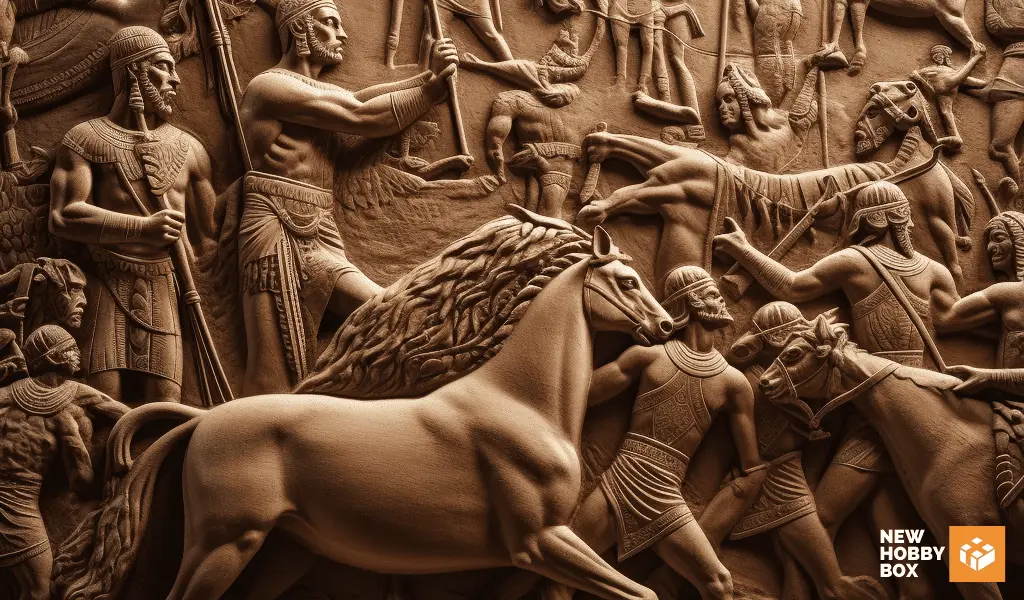
5. Hunting
Hunting, an activity as old as humanity itself, has evolved from a means of survival to a revered pastime. There was a time though when hunting was very much a means of survival, while at the same time, it was a display of wealth and sport for the extremely wealthy. From antiquity, hunting has been the sport of kings: there are records of Egyptian pharaohs, Chinese emperors, Indian rajahs, and Middle Eastern sheiks hunting as a hobby. And as you’d imagine, it wasn’t because they were starving. In many countries, the land was set aside, and animals were bred or imported for the royal hunt.
The king and his entourage would travel vast areas, asserting authority over the countryside and its people. Important guests and visitors would be entertained, and loyal subjects would be rewarded by being invited to hunt.

Several artworks show nobles hunting, depicting them as vital and powerful, subduing nature and, therefore, their enemies. The image of a hunter standing over a dead lion still has the same symbolism. By the nineteenth and twentieth centuries, royalty and political leadership often overlapped, with hunting a critical activity. Fox hunting remains an aristocratic pursuit in England. For those opposed to political power, hunting symbolized freedom and the ability to survive off the land.
Modern hunting is closely associated with conservation, good farming practices, and healthy outdoor pursuits like tracking, hiking, and camping. In most countries, it’s closely legislated and seasonal. Today, hunting is not limited to firearms: people hunt using bows and arrows, for example. This ancient hobby remains popular but isn’t removed from its share of controversy, with detractors arguing for animal rights.
Whether, for sustenance or sport, hunting connects enthusiasts to the great outdoors and the primal instincts of our ancestors. Moreover, ethical hunting promotes wildlife conservation and sustainable practices, ensuring that this ancient hobby remains relevant and responsible in modern times.
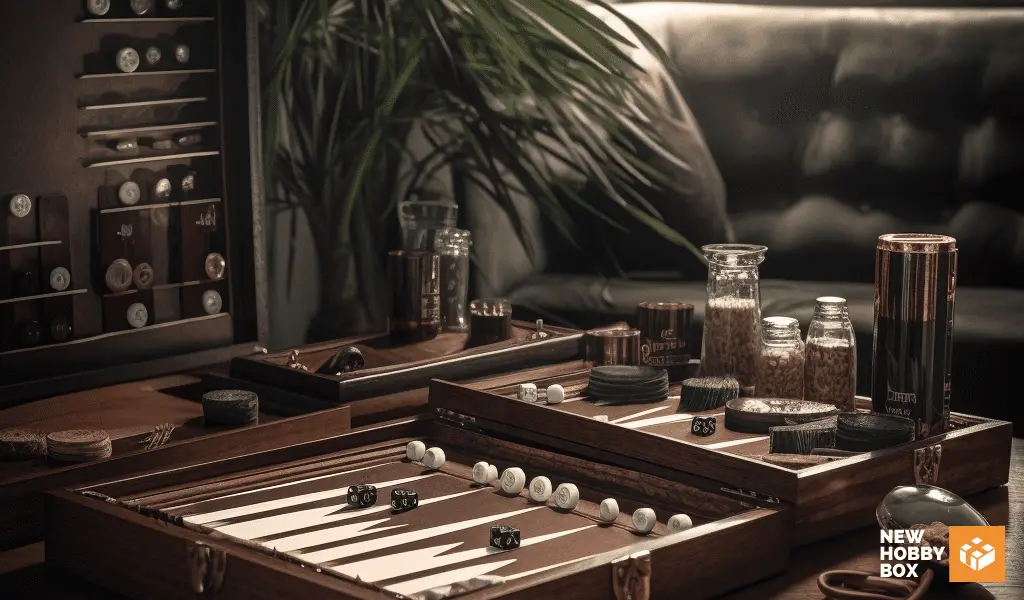
6. Backgammon
Backgammon, is a strategic board game with origins in the ancient Middle East (Persian empire covering territories of modern-day Iran, Iraq, and Syria) and has entertained players for thousands of years – some date it to 5,000 years old. Its simple yet engaging gameplay has transcended cultures and ages, making it a timeless classic.
Even earlier versions of Backgammon have been found in Egypt, with a game called Senet, whose original rules have been lost. The games of ludo (with Roman origins) and checkers are also related to backgammon. There are limitless historical references to backgammon, especially in art – plus, they’re found all over the world, including: China, Japan, India, Italy, Spain, and the UK. Now, the rules and names differ slightly in each case, but there’s a consistent theme in each variety.
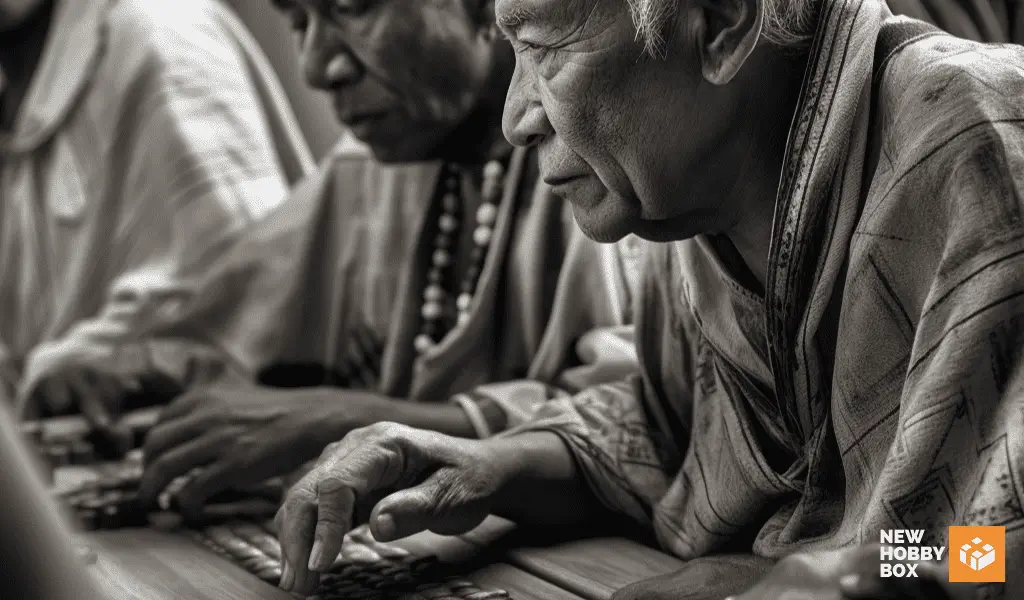
The version played today originated in the fifth century CE in Greece and was called tabula – which simply translates to slate. The two-player game is played on an unusual board depicting 24 points or pips, using 30 checkers or counters and a set of dice. The rules involve each player moving a series of counters from the so-called outer board to the home board while removing (bearing off) the opposition’s counters.
Backgammon is fiercely contested wherever it’s being played, and it’s a game that lends itself to gambling. Because of this association, it’s a board game that’s been banned in different regions and eras throughout history, such as 10th century Japan and 16th century England.
The game’s popularity has waxed and waned, competing for attention with chess in the nineteenth century. The heydey of Backgammon was in the early twentieth century; by the 1980s, Backgammon was relegated to casinos and replaced by games like Monopoly or online games in the home. Backgammon enthusiasts not only enjoy the challenge of outwitting opponents but also revel in the game’s rich history and sense of camaraderie.
If you’re into these ancient hobbies but want something a bit more practical, take up the art of scrimshaw or learn the ancient Coptic bookbinding techniques. Either is sure to fill a historical hobby void in your life.
What Is The Most Expensive Hobby?
Yachting, playing polo, and collecting luxury cars are the most expensive hobbies due to the high costs of acquisition and maintenance. Each hobby requires significant investments, with ongoing expenses like upkeep, equipment, and club memberships adding to the overall cost.
At the most basic level, having a hobby implies that you no longer have to spend all your time working, whether paid or unpaid. It also means having enough resources to invest in a leisure pursuit, whether a single fishing rod or a priceless stamp collection.
However, there’s a whole other tier reserved for the global ultra-wealthy, one that only a handful of individuals can afford to pursue while the rest of us simply dream about.

7. Yachting
Yachting is a recreational activity involving sailing or cruising on a yacht. It offers an opportunity to explore the open seas, participate in competitive races, or enjoy leisurely vacations aboard private vessels, often featuring luxurious amenities and services.
Like many other modern hobbies, and certainly, some you’ve already read on this list, sailing or boating was originally a profession and millennia-old. It’s still an occupation for many, but for those who don’t depend on it for a livelihood, sailing is a wonderful hobby – albeit an expensive one.

How Expensive Is Yachting?
If you’re starting out sailing, the first step is to have lessons, which will cost anything from $500 to $1000 per lesson. While a small seaworthy boat may cost $7000-20,000, a decent yacht will start from $300,000 and easily reach hundreds of millions of dollars.
The super-rich spends many millions on yachts. And the moment you add in insurance, docking fees, fuel costs, maintenance, and repairs; you’re looking at millions more annually. Plus, this exclusive tier of yacht owners employs an entire crew for the utmost luxury and convenience so their yacht can meet them anywhere in the world. They act like floating hotels, complete with five-star dining and facilities.
One notably expensive version of yacht racing are J-class yachts. There are only nine of these boats worldwide since they were built in the early twentieth century. A couple of examples were made more recently, following original plans meticulously to produce the beautiful single-masted sailboats.
A J-class yacht will cost around $10-20 million. Because these are vintage boats, the annual upkeep can also cost millions as every component is custom-made: think mahogany interiors from a single tree. Competing in races involves hiring a crew and sailing across the world to exotic locations like Bermuda. If you’re not willing and able to spend millions in a month, then this is probably not the hobby for you.

8. Polo
Here’s another hobby to make the list that earns the distinction of being associated with royalty – dubbed the “sport of kings”, polo is an expensive and exhilarating hobby that has its roots in ancient war games. Originating around 600 BCE in Central Asia, the sport spread across the globe and became associated with royalty and the elite.
Today, the costs of participating in this prestigious sport can be staggering, with players requiring multiple well-trained ponies, professional grooms, and significant financial resources.
The history of polo is rich and fascinating, with the sport evolving from a form of military training to an exclusive pastime for the wealthy. British military officers and tea farmers popularized the game in the 19th century, and polo quickly spread to various countries, including the United States. As reliance on horses diminished with modern advancements, polo solidified its status as a luxury sport.

The high costs associated with playing polo contribute to its exclusivity. A serious polo player needs a “string” of at least five ponies, each costing around $50,000 (easily). Additional expenses include stabling, feeding, veterinary care, and the employment of grooms to maintain the ponies. Moreover, transporting the animals to matches, club memberships, and competition fees add to the financial burden.
The sport’s unique allure comes from its rich heritage and the camaraderie among players. Despite the crazy high costs, polo enthusiasts consider the investment worth it for the thrill and excitement of participating in such a prestigious activity.

9. Collecting Luxury Cars
We’re not talking about the Silicon Valley tech CEO who buys an insanely nice sports car here. Collecting luxury sports cars is more akin to Saudi Royalty owning 1 of 1 Bugatis or other extremely rare vehicles that have the price to match. While the rest of us are left collecting miniatures and matchbox care, the Bezos of the world can fork over hundreds of millions to build a beautifully rare garage of dozens of exotic sports cars.
This rare pastime goes beyond simply owning a transportation vehicle; it’s about appreciating the craftsmanship, design, and performance of these high-end machines. Car collectors often focus on specific themes, such as vintage muscle cars, European sports cars, or limited-edition custom builds, showcasing their unique tastes and interests.
The costs associated with luxury car collecting can be astronomical, with serious collectors spending seven figures or more on each vehicle. And the expenses don’t stop at purchasing the cars; collectors also need to consider storage, maintenance, and insurance costs. Some may even drive their prized possessions only once, emphasizing that the goal is to own these remarkable machines, not just to drive them.

Despite the considerable expenses, savvy car collectors view their collection as an investment. Luxury vehicles, especially rare or limited-edition models, are always in demand and can appreciate over time. This potential return on investment can make the hobby even more appealing to those with the financial means to pursue it.
Car collections can also serve as symbols of wealth and success, often showcased in private garages or at exclusive automobile events. These collectors take pride in their ability to acquire rare and exquisite machines, and their collections often become conversation starters and points of admiration among fellow enthusiasts.
What Exotic Hobbies Do You Know?
Some hobbies are interesting because they’re rare and have so few participants that we’ve never heard of them. Others intrigue us because they teach us about a new culture or country. That’s what this section is all about – presenting you with hobbies that are intrinsically tied to a culture, and there’s a high probability you’ve never heard of or even imagined them before. Here are three exotic hobbies we find fascinating.
Three exotic hobbies are beetle fighting, stick fighting, and playing toad in the hole. All have ancient cultural roots, with participants proud of their heritage. Beetle and stick fighting are controversial because of animal and human safety, but anyone can toss coins into the sapo‘s mouth.

10. Beetle Fighting
You may have heard of Spanish bullfighting, or even Chinese cricket fighting, but have you heard of Japanese beetle fighting? Beetle fighting is an ancient and fascinating hobby rooted in Japanese culture and tradition that’s captured the interest of millions worldwide.
The insect fighters are known as kabutomushi, or samurai beetles, and they’re native to East Asia. Pound for pound, these are powerful insects, and they showcase their strength and skill in small plastic arenas. The goal in beetle fighting is for the victor to flip or haul their opponent out of the ring (the latter similar to sumo wrestling, another Japanese cultural mainstay). Fans of this hobby eagerly record these battles and share them online, and they are something of a social media viral sensation.
The origins of beetle fighting can be traced back to the natural behavior of these insects in the wild. Male beetles often engage in combat to secure mating rights with females, using their horns to flip or toss their rivals. This primal display of strength has been transformed into a captivating hobby that highlights the unique beauty and power of these small creatures.
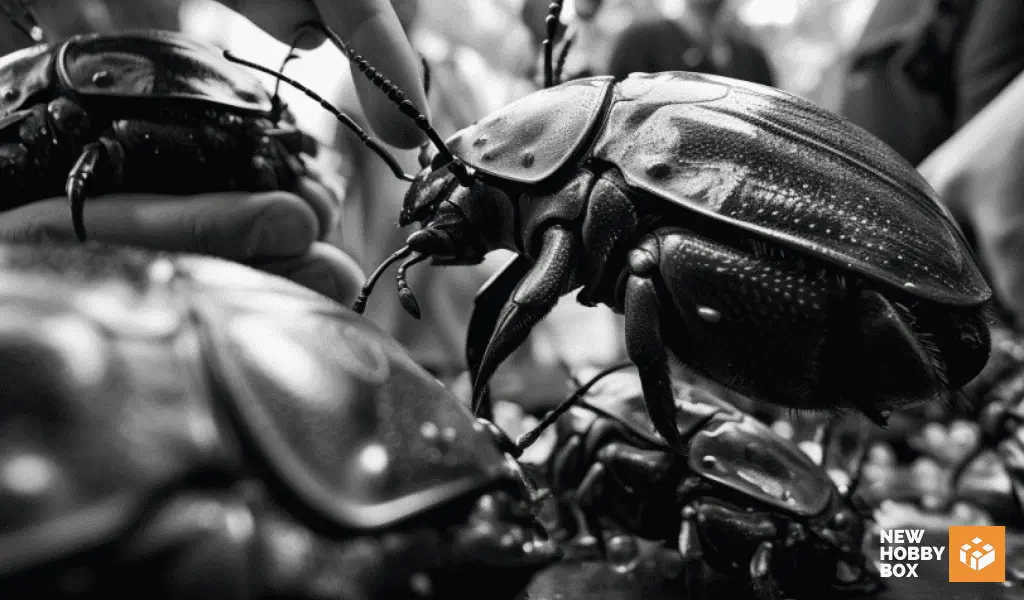
Enthusiasts argue that the best beetles for fighting are locally sourced and well-cared for, treated as beloved pets. They are meticulously trained, fed, and groomed, similar to miniature gladiators preparing for competition. While the practice does not result in the death of the beetles, some animal rights activists raise concerns about the potential stress inflicted on the insects during these battles. But perhaps the bigger concern is invasive species.
The illegal import of beetles, particularly from Bolivia, has caused issue in some local ecosystems throughout Japan.

11. Stick Fighting
Like fencing and archery, stick fighting developed as training for warriors. Elements of stick fighting are found in most martial arts. However, the sport is firmly rooted in African history, especially in Ethiopia and South Africa. The practice, also known as intonga, is traditionally taught to boys from a young age, often as young cattle herders. These young warriors, including notable figures like Nelson Mandela, have honed their skills using one or two sticks and a shield, with opponents taking turns on offense and defense to score hits through body strikes.
Although stick fighting has faced bans throughout history for political and safety reasons, enthusiasts argue that it is a vital cultural expression and an essential showcase of skill, fitness, and discipline. The sport has evolved into a competitive arena where talented youngsters can potentially escape poverty, similar to professional football or boxing.

In South Africa, stick fighting is an integral part of the Nguni cultural tradition. It is a highly regarded practice that fosters camaraderie and respect among participants. Despite its occasional tumultuous past, stick fighting has persevered as a powerful symbol of strength, agility, and cultural heritage.
Today, modern stick-fighting tournaments continue to honor ancient traditions while providing a platform for the next generation of warriors to showcase their skills.

12. The Toad Game
The Toad Game is a cultural one that goes by many names: Juego de Sapo, Tiro al Sapo, or Sapito. This peculiar pastime extends all the way back to an ancient Inca legend, yet today it’s evolved into a popular social activity in countries like Colombia, Bolivia, Argentina, Peru, and Portugal. The Toad Game might take the top spot for a rare and exotic hobby that brings people together for laughter, camaraderie, and friendly competition. Here’s how the Toad Game is played:
The game itself involves tossing a coin toward a metal or wooden representation of a toad, aiming to land it in the amphibian’s mouth or in one of the 25 holes surrounding it. Each hole carries a point value, and players earn points based on their accuracy.
The Toad Game’s origins stem from the magical tale of a sapo (toad) residing in the sacred Lake Titicaca, believed to grant wishes to those who could successfully feed it a coin. Today, this legendary creature continues to captivate players and spectators alike.

Playing Sapo isn’t just about winning points; it’s about immersing oneself in a tradition that transcends generations. You’ll often find crazy-spirited games taking place in local pubs or open squares, with participants of all ages joining in the fun. And of course, some wagers are happening simultaneously.
As you explore the world of rare, old, and exotic hobbies, the Toad Game stands out as a remarkable combination of ancient legend and modern enjoyment. Whether you’re a seasoned player or a curious newcomer, this enchanting pastime offers a fascinating glimpse into the traditions that have shaped the diverse cultures of South America and beyond.
Meet Your Hobby Needs with the Old, Rare, Exotic, Expensive
Previously, only the wealthy had resources for hobbies, with royalty enjoying hunting, coin collecting, and polo. Today, the rich still enjoy these hobbies, although they now collect cars and indulge in yacht racing. As people developed leisure time for hobbies, they undertook sports, games, and arts that challenged themselves and made them laugh.
Whether rare, exotic, expensive, or everyday, hobbies are cultural expressions that make us human. Explore more fascinating hobbies by visiting our tutorials or inspirational articles at New Hobby Box.

